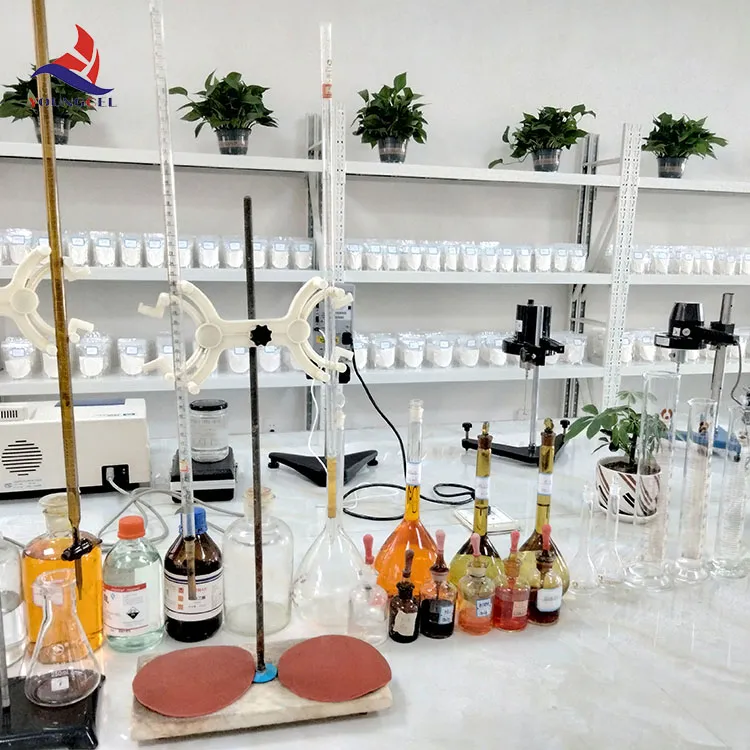The Versatility of HPMC An Overview of Methyl Cellulose
Hydroxypropyl methylcellulose (HPMC) is a widely used polymer derived from cellulose, a natural biopolymer found in the cell walls of plants. HPMC has gained significant attention in various industries due to its unique properties, which make it suitable for a wide range of applications. This article will explore the characteristics, applications, and advantages of HPMC, shedding light on its importance in both the pharmaceutical and construction industries.
Chemical Structure and Properties
HPMC is created through the modification of cellulose by introducing hydroxypropyl and methyl groups into its structure. This modification enhances the solubility and functionality of cellulose, resulting in a compound that exhibits comprehensive properties such as thickening, stabilizing, and film-forming abilities. HPMC is a white to off-white powder that is odorless and tasteless, and it dissolves in cold water to form a clear, viscous solution. The degree of substitution of hydroxyl and methoxy groups determines its solubility and viscosity, allowing for tailored applications.
Applications in the Pharmaceutical Industry
One of the most notable applications of HPMC is in the pharmaceutical field. It is commonly used as a binder and controlled-release agent in tablet formulations. The polymer's excellent film-forming ability allows it to create a protective coating around tablets, enhancing stability and prolonging the release of active ingredients. Additionally, HPMC is used in the formulation of various dosage forms, including suspensions, gels, and creams. Its non-toxic and biocompatible nature makes it ideal for use in pharmaceuticals.
HPMC also plays a significant role in the production of ophthalmic solutions. Its viscosity-enhancing properties help maintain moisture in the eyes and improve the retention time of eye drops, providing relief for dry eye conditions. Moreover, HPMC is employed in the development of biodegradable drug delivery systems, where the controlled release of therapeutic agents is paramount.
Applications in the Construction Industry
hpmc methyl cellulos

In the construction sector, HPMC is utilized in various applications due to its water-retention and binding properties. It is widely used as a thickening and stabilizing agent in mortar, tile adhesives, and joint fillers. The incorporation of HPMC into these materials improves their workability and adhesion, allowing for easier application and enhanced structural integrity.
Moreover, HPMC helps maintain moisture in cementitious materials, promoting proper curing and hydration. This property is particularly beneficial in improving the overall strength and durability of construction materials. As the construction industry increasingly seeks eco-friendly solutions, HPMC’s biodegradable characteristics and its ability to enhance performance have made it a popular choice among builders and architects alike.
Advantages of HPMC
One of the primary advantages of HPMC is its versatility. The polymer can be easily modified to achieve specific properties suited to various applications, making it an indispensable material across multiple industries. HPMC’s non-toxic and biodegradable nature also aligns with the growing demand for sustainable and environmentally friendly products.
Additionally, HPMC provides excellent thermal stability, which is crucial in both pharmaceuticals and construction materials. Its resistance to degradation under heat helps maintain performance and reliability over time. The ability to create stable colloidal solutions further enhances its functionality in formulations, allowing for improved texture and consistency in end products.
Conclusion
In conclusion, hydroxypropyl methylcellulose (HPMC) is a remarkable compound that plays a vital role in various industries, particularly in pharmaceuticals and construction. Its unique properties, including solubility, thickening ability, and biocompatibility, make it an invaluable ingredient in numerous formulations. As industries continue to seek sustainable and effective solutions, the demand for HPMC is likely to grow, further cementing its position as a crucial component in modern applications. The ongoing research and development surrounding HPMC will undoubtedly unveil new opportunities for its use, ensuring its relevance in an ever-evolving market.
-
Rdp Powder: Key Considerations for Wholesalers in the Building Materials IndustryNewsJul.08,2025
-
Key Considerations for Wholesalers: Navigating the World of Hpmc - Based ProductsNewsJul.08,2025
-
Hpmc Detergent: Key Considerations for WholesalersNewsJul.08,2025
-
Key Considerations for Wholesalers: China Hpmc For Tile Adhesive, Coating Additives, Concrete Additives, and MoreNewsJul.08,2025
-
Crucial Considerations for Wholesalers: Navigating the World of Construction MaterialsNewsJul.08,2025
-
Key Considerations for Wholesalers Sourcing Additive For Cement, Additive For Concrete, Additive For Putty from Additive Manufacturer Shijiazhuang Gaocheng District Yongfeng Cellulose Co., Ltd.NewsJul.08,2025




